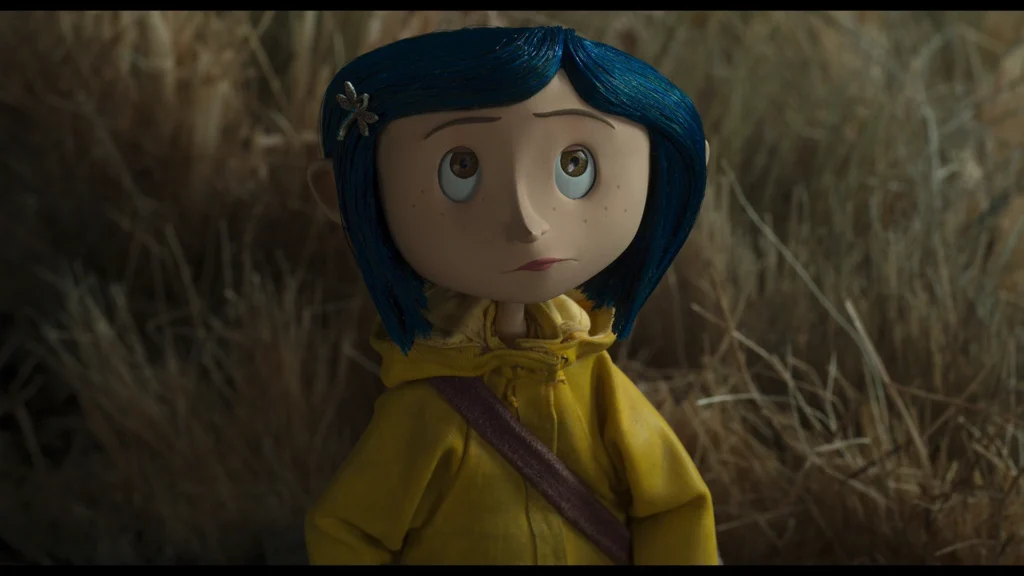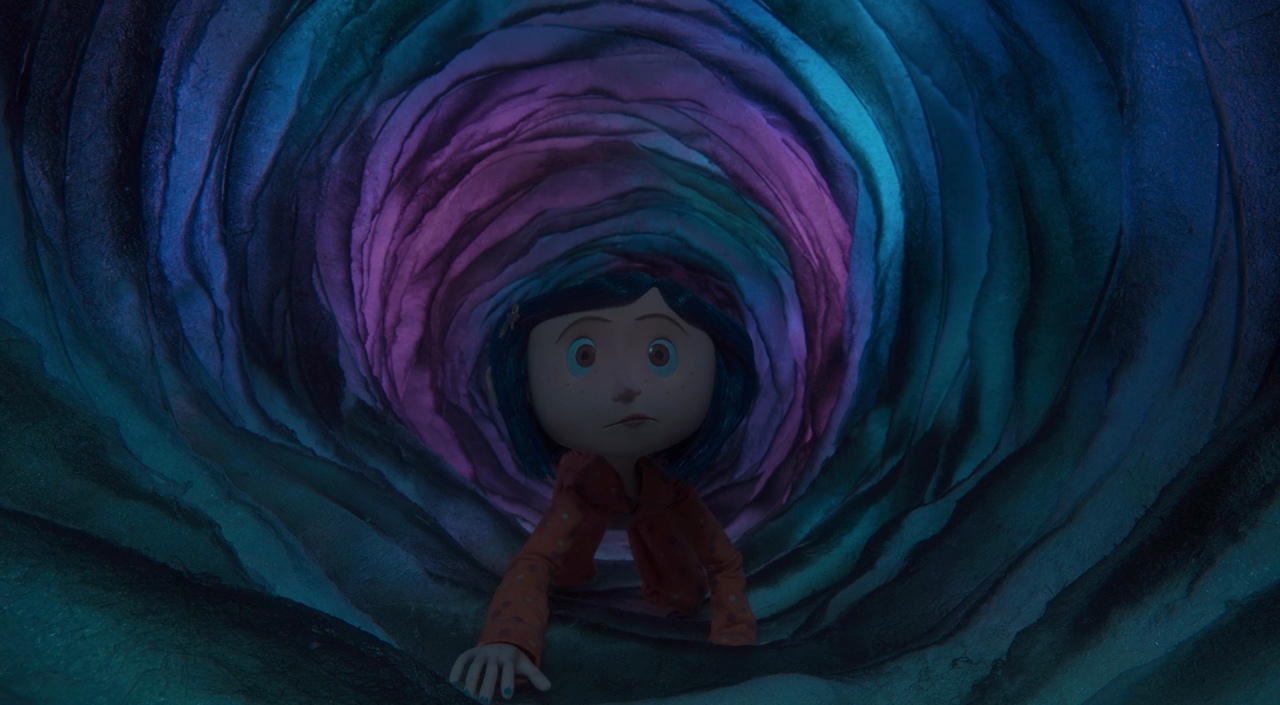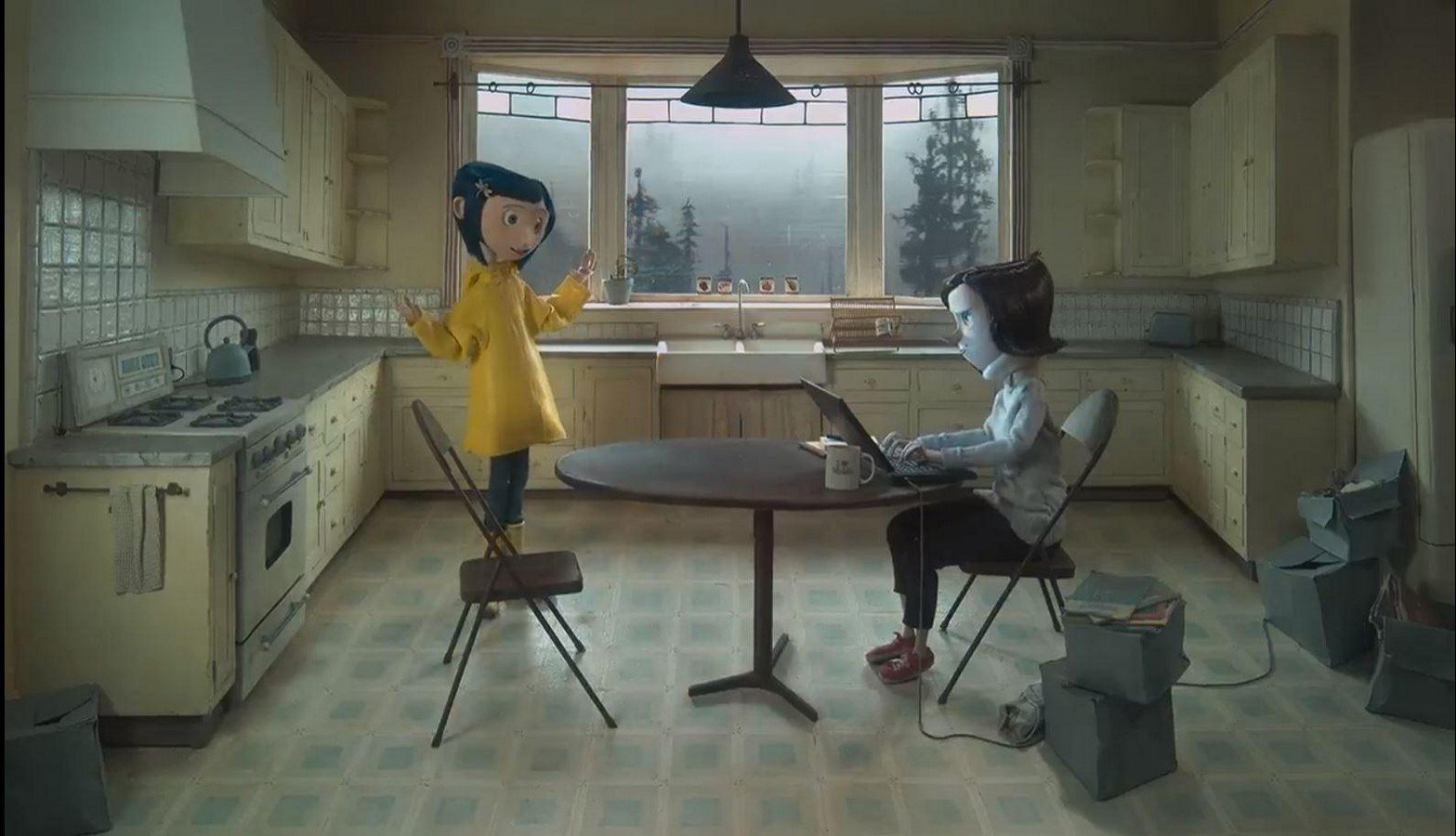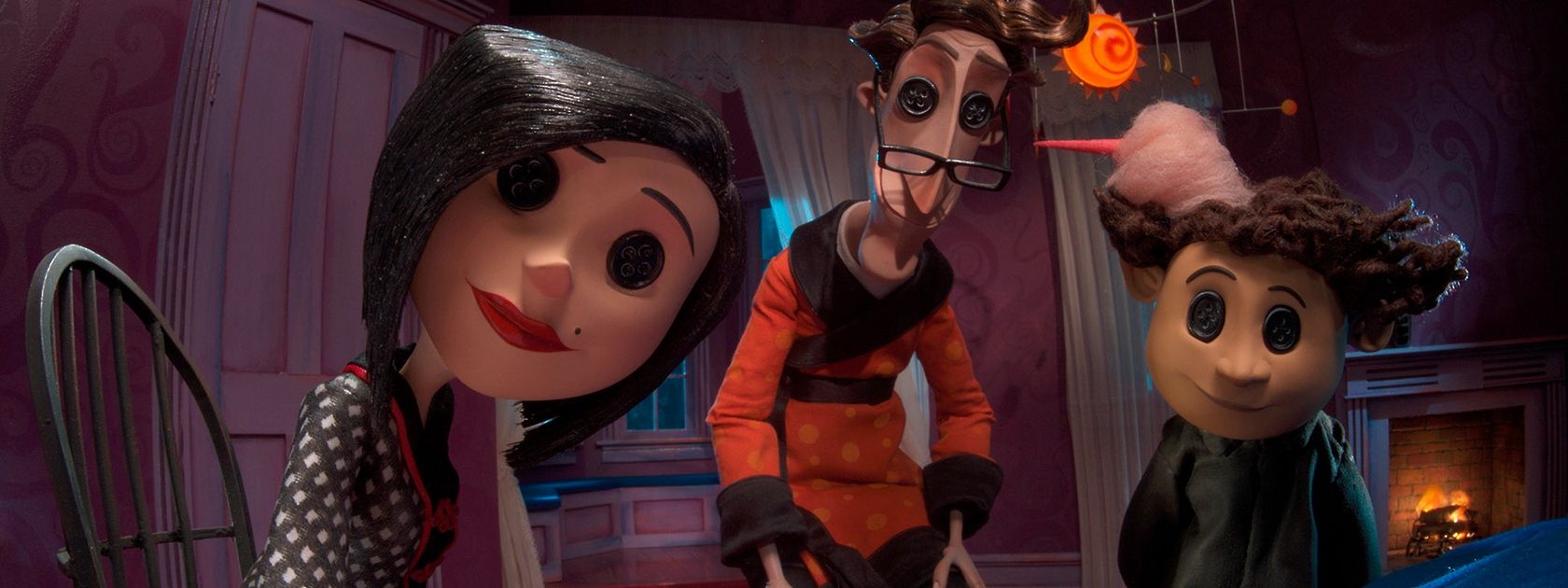
In the realm of children’s horror, Coraline stands apart like a needle scratched into a lullaby, a shadow slipping beneath the doorframe of innocence.
The 2009 stop-motion masterpiece, adapted from Neil Gaiman’s eerie novella, lures viewers into a dreamlike nightmare where nothing is quite what it seems and everything is broken behind the button eyes. But Coraline is more than a dark fairy tale. It’s a gut-wrenching psychoanalytic dissection of childhood trauma, the suffocating ache of neglect, and the horrifying price of escape.

The Other World as the Unconscious Mind
At its core, Coraline is a journey into the unconscious, a surreal landscape where the familiar twists into uncanny menace. The Other World — with its flawless lawns, doting “Other Parents,” and button-eyed smiles — is a seductive mirage for a child starved of attention. It promises love, warmth, and control, but demands a terrible price: surrendering autonomy and identity.
This mirror realm isn’t just a playground of horrors; it’s the embodiment of Coraline’s psyche wrestling with her feelings of abandonment and invisibility. The Other Mother is the dark mother archetype — simultaneously nurturing and devouring. She represents the cloying grasp of dependency, the danger lurking when love becomes possession.
Buttons as the Ultimate Symbol of Control and Loss
The buttons sewn over the eyes of the Other World’s denizens are chilling symbols of erasure — a literal blindness to reality and self. Buttons, mundane yet sinister, symbolize the forced transformation Coraline must resist to retain her identity. They speak to the suffocating nature of control, the loss of free will under the guise of protection and love.
The act of buttoning eyes is a psychological lock, an irreversible submission to the Other Mother’s will. Coraline’s struggle is a fight for agency against this creeping, decorative oppression.

Neglect and the Child’s Lonely Rebellion
Coraline’s real world is no utopia: her parents are distracted, busy with their own lives, leaving her isolated in a big, cold house. This neglect fractures her sense of security, making the Other World’s dark allure irresistible. Psychoanalytically, her escape is a defense mechanism — dissociation from emotional pain.
But unlike a typical victim, Coraline is defiant. She confronts her fears head-on, unraveling the nightmare by reclaiming her voice and refusing to be consumed. This battle is the child’s heroic quest for selfhood amid the shadows of emotional neglect.
The Hidden Horror of Domesticity
Coraline turns the home — traditionally a place of comfort — into a maze of menace. Every room is a cryptic riddle, every hallway a potential trap. The film exposes the dark underbelly of domestic spaces where neglect festers and secrets lurk behind wallpaper.
The Other Mother’s home is an uncanny doubling of reality — a hyper-controlled environment where everything is designed to imprison, not protect. This duality is a metaphor for the suffocating expectations often placed on children, where love becomes control and care becomes captivity.
Sewing Back Identity
In the end, Coraline’s victory isn’t just about escaping the Other World. It’s about reclaiming fractured identity and stitching together the torn edges of her world. Her courage to face the monstrous Other Mother and rescue her parents symbolizes the triumph of self over suffocation, light over shadow.
Coraline is a dark fairy tale for a modern psyche — a haunting exploration of childhood fears, the craving for love, and the terrifying cost of losing oneself to control.





